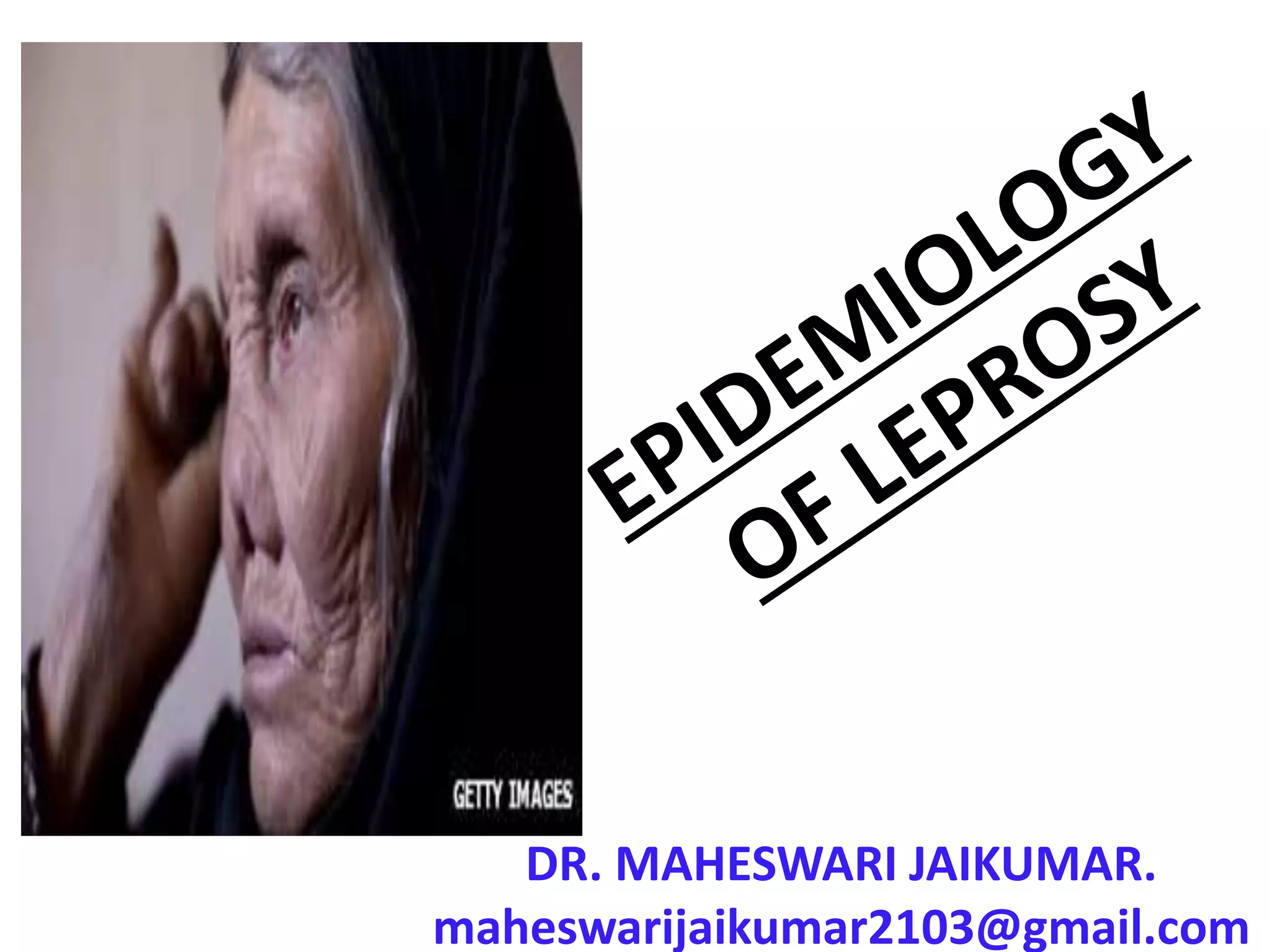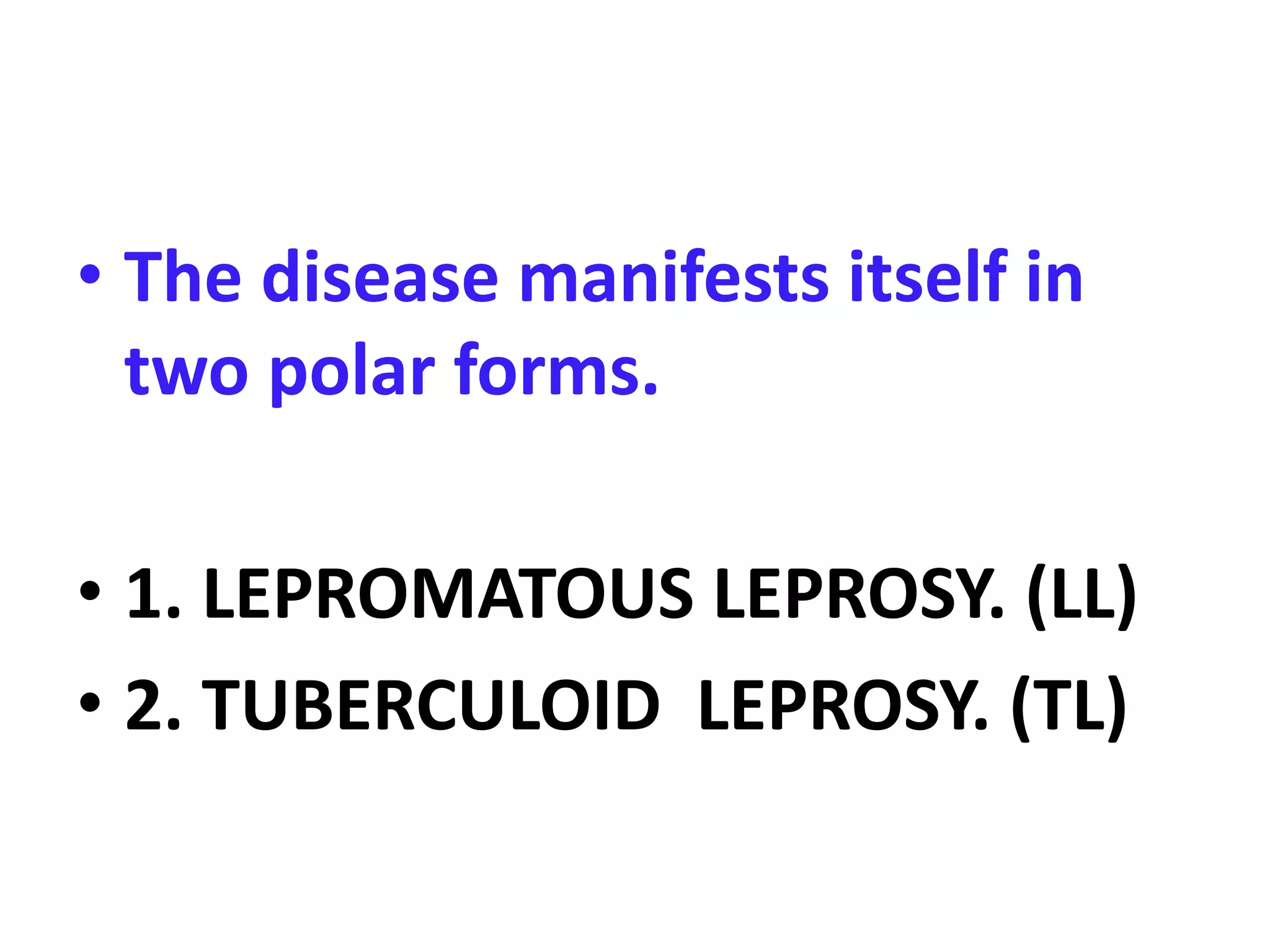This document provides information on leprosy (Hansen's disease), including its causes, signs and symptoms, transmission, diagnosis, classification, treatment, and control. It discusses that leprosy is caused by Mycobacterium leprae, affects the skin and nerves, and manifests as tuberculoid, borderline, or lepromatous forms depending on the host's immune response. Diagnosis involves clinical examination of skin and nerves as well as bacteriological examination of skin and nasal smears. Multidrug therapy including rifampicin, dapsone and clofazimine is recommended. Control relies on case detection, treatment, surveillance, and health education to prevent disability.




































































































































